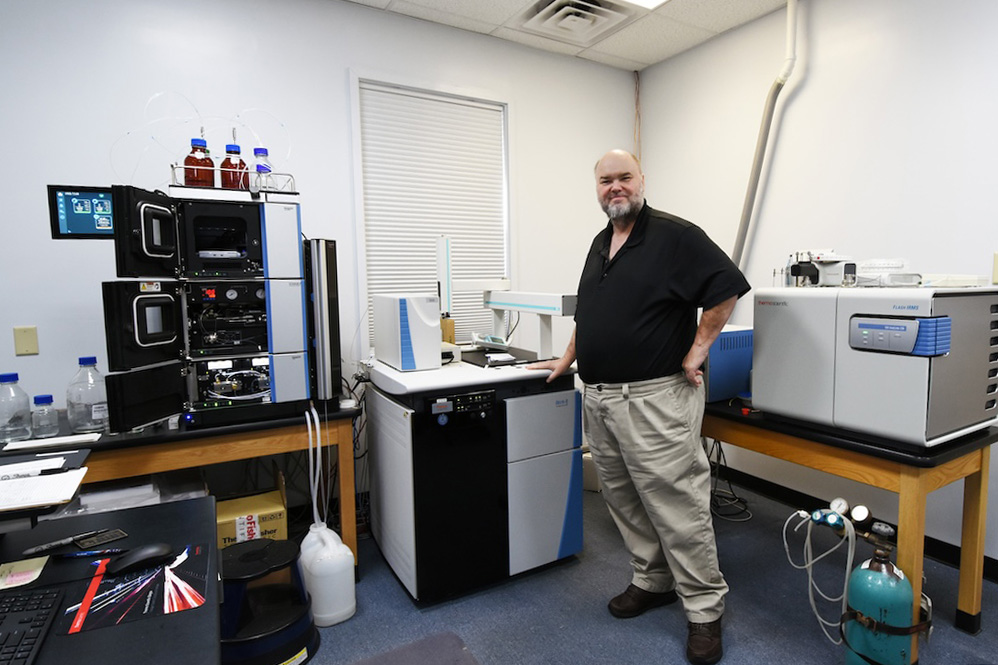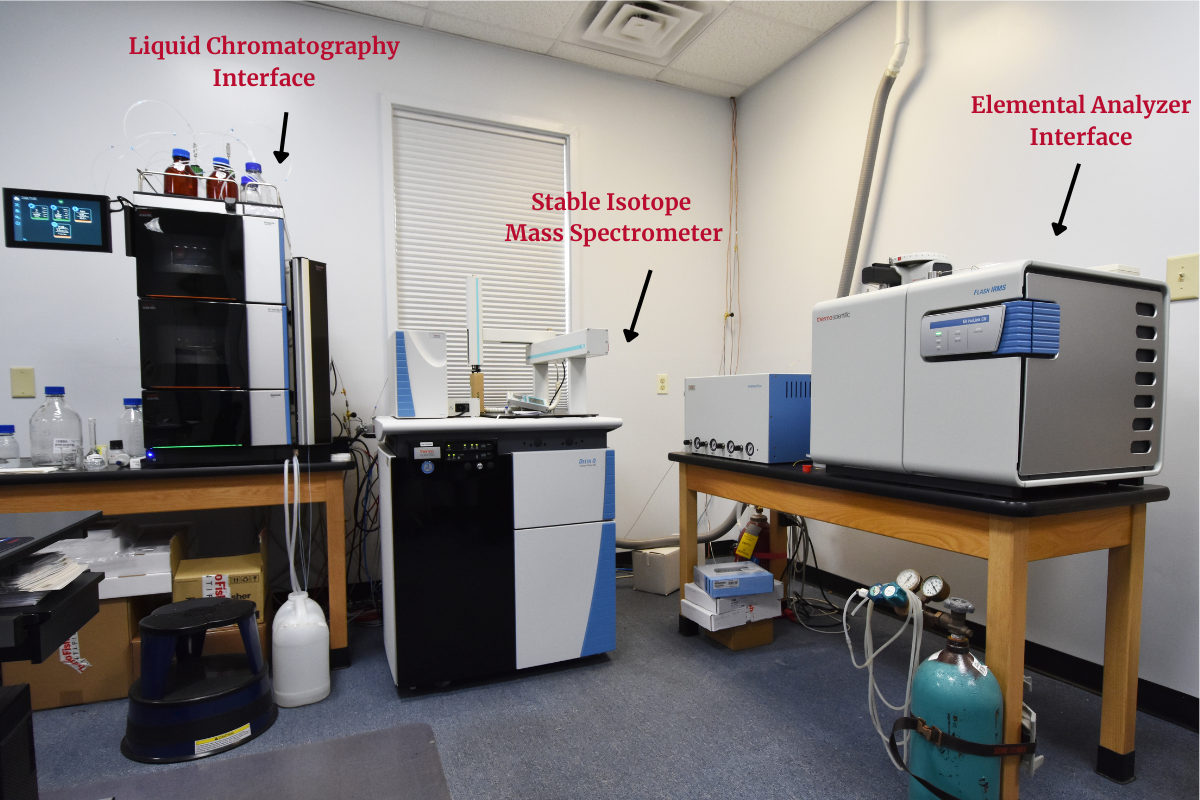
The UGA Skidaway Institute of Oceanography’s (SkIO) Skidaway Island Stable Isotope Laboratory has received and installed a new, advanced isotope ratio mass spectrometry system, enabling scientists to analyze stable isotopic composition in both solids and complex mixtures of compounds, such as amino acids or DNA. The system is also ideal for training both undergraduate and graduate students.
If scientists are detectives, stable isotopes are their magnifying glasses, helping them gather clues and uncover mysteries about the environment and history. Stable isotopes are variations of elements with the same number of protons but different numbers of neutrons that are non-radioactive, meaning they do not decay over time. They’re particularly useful for revealing secrets due to their ability to retain signatures left by various environmental, biological and geological factors.
At SkIO, for example, scientists are studying the isotopic composition of plankton to determine their diets and using stable isotopes to analyze the health of local salt marshes, among other applications. Broadly, stable isotopes can be used to better understand temperature changes over time, water movement, migration patterns and much more.
In mid-October, SkIO scientist Jay Brandes finished the installation of a new Thermo Delta Q Light Stable Isotope Mass Spectrometer, capable of carbon, nitrogen, oxygen and sulfur isotopic measurements, in his Skidaway Island Stable Isotope Laboratory (SISIL). The new system has significantly lower sample size requirements than the equipment it is replacing and allows for new measurements of sulfur isotopes at the SISIL facility.
Along with the new mass spectrometer, the modernized setup includes both a new elemental analyzer interface, capable of handling solids, such as hair, soil and pieces of organisms, and a new liquid chromatography interface, used for more complex mixtures of compounds, such as amino acids, RNA or DNA.
Once added to either the elemental analyzer or the liquid chromatography interface, compounds are converted into pure gasses and sent into the stable isotope mass spectrometer, where their isotopic composition is analyzed.
The new system, which replaces the lab’s 2007 isotope ratio mass spectrometry system, was funded through a $404,000 National Science Foundation (NSF) grant. The new system’s liquid chromatography interface is the first of its kind installed in the United States.

At SkIO, the new liquid chromatography interface will be used to support current and future studies in dissolved organic matter cycling and composition as well as oceanic carbon cycling. The new elemental analyzer opens up the door for new research directions, including further studies on the role of zooplankton in ocean food webs.
The new instruments are also ideal for training both undergraduate and graduate students in stable isotope analyses through hands-on experiments.
The SISIL facility serves as a regional hub for stable isotope analyses and has provided services to a wide range of scientists and students, from those on or near the Georgia coast to those from as far away as South America and Europe. Scientists and students interested in the new isotope ratio mass spectrometry system can reach out to Jay Brandes.
About SkIO
The UGA Skidaway Institute of Oceanography (SkIO) is a multidisciplinary research and training institution located on Skidaway Island near Savannah, Georgia. The Institute was founded in 1967 with a mission to conduct research in all fields of oceanography. In 2013, SkIO was merged with the University of Georgia. The campus serves as a gateway to coastal and marine environments for programs throughout the University System. The Institute’s primary goals are to further the understanding of marine and environmental processes, conduct leading-edge research on coastal and marine systems, and train tomorrow’s scientists. For more information, visit www.skio.uga.edu.


